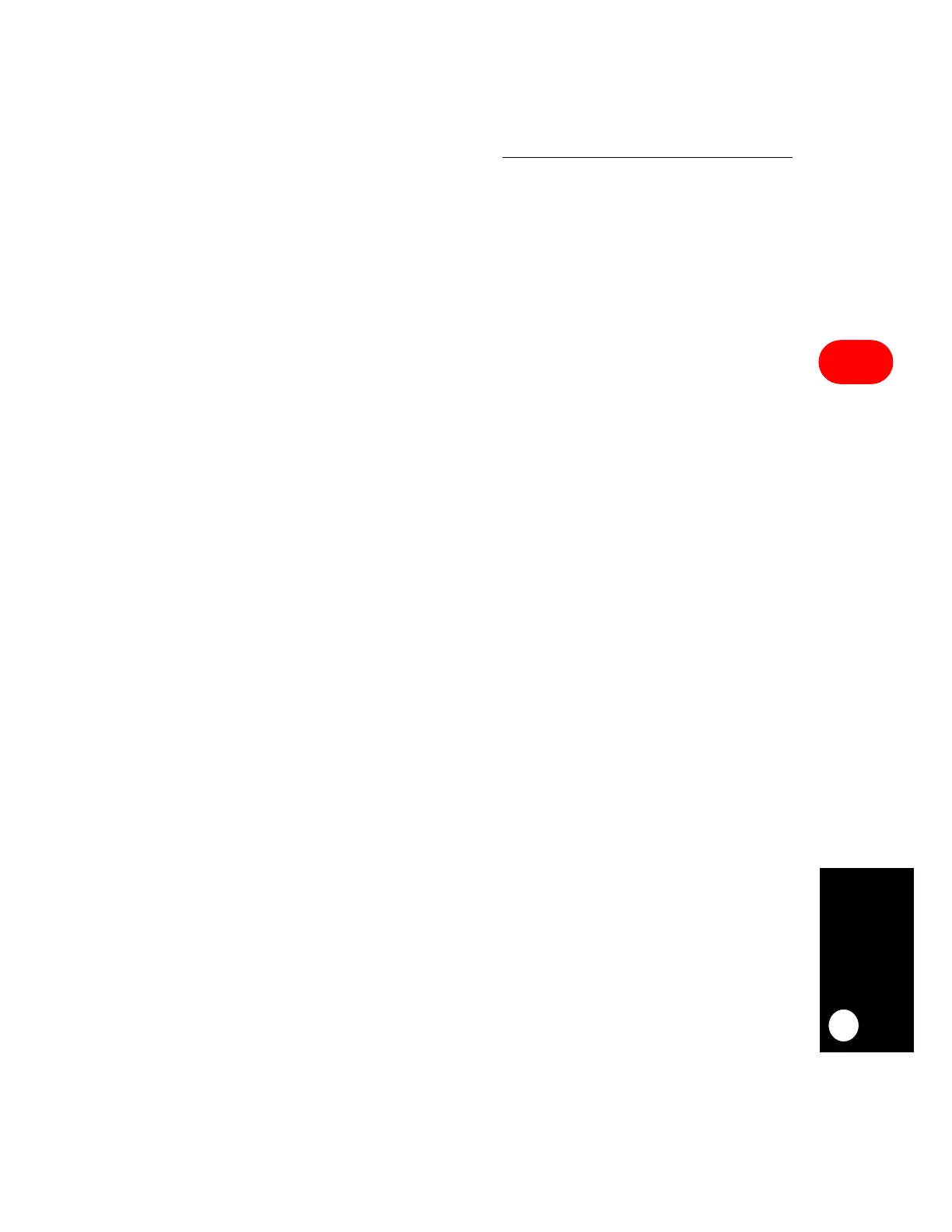Communication Processor Module
MOTOROLA MPC823e REFERENCE MANUAL 16-500
CPIC
COMMUNICATION
16
PROCESSOR MODULE
Within the CPM interrupt level, the sources are assigned a priority structure. On the
MPC823e, you have some flexibility with the relative priority of the interrupt sources.
Once an unmasked interrupt source is pending in the CIPR, the CPM interrupt controller
sends an interrupt request to the U-Bus at level 0, 1, 2, 3, 4, 5, 6, or 7. The CPM interrupt
controller then waits for the interrupt to be recognized. After the core accepts the interrupt
request, the core acknowledges the interrupt by setting the IACK bit in the CPM interrupt
vector register. When the IACK bit is set, the CIVR is updated with a 5-bit vector
corresponding to the sub-block with the highest current priority and the IACK is cleared after
one clock cycle.
16.15.1 Features
The following is a list of the CPM interrupt controller’s main features:
• Twenty-Eight Interrupt Sources
• Sources Can Be Assigned to a Programmable Interrupt Level
• Programmable Priority Between the SCCs and USB
• Two Priority Schemes for the SCCs and USB
• Programmable Highest Priority Request
• Fully Nested Interrupt Environment
• Unique Vector Number for Each Interrupt Source
16.15.2 CPM Interrupt Source Priorities
The CPM interrupt controller has 28 interrupt sources that assert a programmable interrupt
request level to the core and the priority of these sources is shown in Table 16-45. There is
some flexibility in the relative ordering of the interrupts in the table, but, in general, the
relative priorities are fixed in the descending order shown. An interrupt from the parallel I/O
signal PC15 has the highest priority and an interrupt from the parallel I/O signal PC4 has the
lowest. A single interrupt priority number is associated with each table entry.
Notice the lack of SDMA interrupt sources. They are reported through each individual USB,
SCC, SMC, SPI, or I
2
C channel. The only true SDMA interrupt source is the SDMA channel
bus error entry that is reported when a bus error occurs during an SDMA access. There are
two ways to add flexibility to the table of CPM interrupt priorities (the USB/SCCx relative
priority option or the highest priority option).

